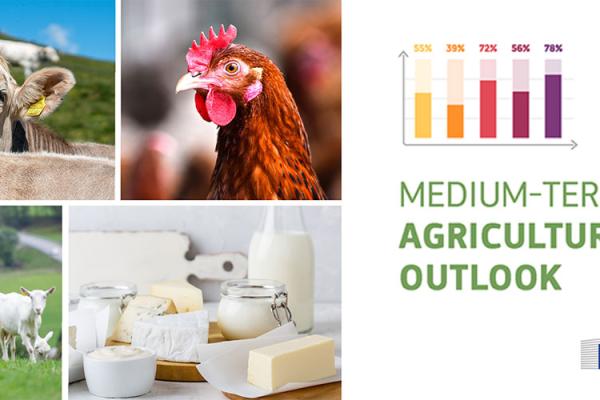
Raising health awareness will benefit fruit and vegetables consumption, while changing lifestyles and preferences will influence the wine sector. Climate change will remain a challenge for olive oil, but the use of resistant varieties should ensure viability. These are just a few of the projections from the European Union agricultural outlook for 2021-31 report published on 9 December 2021 by the European Commission.
EU olive oil production could reach 2.5 million tonnes by 2031, a 22% increase compared to 2020, with area of olives for oil remaining stable and the use of more resistant varieties, contributing also to higher yields. Importance of EU exports will rise with the production increase, from 35 % in 2020 to 44% in 2031. In addition, EU olive oil exports could benefit from a positive health image and its well-known quality, reaching 1 million tonnes by 2031. As for EU consumption, growth is expected to be driven by non-producing countries, representing 21% of consumption in 2020 and 32% in 2031.
Regarding wine, EU wine production is expected to decline by 0.3% per year, resulting in 148 million hectolitres in 2031. This is due to a decline of yields only partially compensated by the use of new varieties, more adapted to climate change. EU consumption is projected to reach 22 litres per capita in 2031, a decrease of 0.4 litres compared to 2020. However, this reflects a slowdown of the recent declining trend, with -0.2% per year in 2020-31 compared to -1.1% in 2010-20. The wine sector is adapting to changing lifestyles which accelerated due to the Covid-19 pandemic. For instance, sustainability concerns have increased, with a growing demand for organic and natural wines, but also led to new behaviours such as consuming more wine at home. In addition, a new generation of consumers, more conscious of consuming alcohol with moderation, are driving the demand for wines with lower alcohol content and sparkling wines.
By 2031, the production of fresh tomatoes is due to decrease by 0.4% per year, and reach 6.3 million tonnes in 2031. This decline is mainly driven by the strong drop of winter production in Spain and a shift to smaller-sized tomatoes, which have a lower volume but higher added value. Production of tomatoes for processing is due to remain stable, at around 10.4 million tonnes. EU per capita consumption of fresh tomatoes is expected to remain stable, at 15kg in 2031. Similarly, consumption of tomatoes for processing will also be stable at 18 kg per capita in 2031.
EU production of fresh peaches and nectarines is projected to decline by 0.4% per year, reaching 2.9 million tonnes in 2031. This is due to the dedicated area declining. Peaches are losing share of the total fruit basket, leading to a lower consumption of peaches and nectarines projected at 6.4 kg per capita.
Total usable EU apple production is expected to remain stable by 2031, at 11.1 million tonnes. This is the result of a decreasing area under cultivation compensated by increasing yields thanks to the use of new varieties and improved agronomic management. EU consumption is projected at 7.6 million tonnes of apples consumed fresh and 3.6 million tonnes for processing in 2031. Per capita, consumption of fresh apples in expected to increase to 15 kg (up 0.6% per year).
As for oranges, EU production is expected to reach 6.5 million tonnes by 2031, an increase of 0.3% per year. Thanks to the consumption of freshly squeezed orange juices in supermarkets, cafes and restaurants, consumption of fresh oranges is growing. Per capita, consumption will reach 13.3 kg in 2031 (+0.5 kg per year).
The EU agricultural outlook report for 2021-31 contains all relevant market data, accompanied by an explanation of assumptions, and a description of the macroeconomic environment. The projections and scenarios described in the report will be discussed at the annual EU agricultural conference, taking place online on 9-10 December 2021.
More information
Related links
EU olive oil sector policy information
Details
- Publication date
- 9 December 2021



